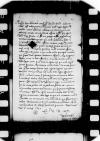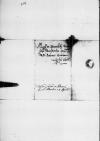XX-a mensis praeteriti coronatio serenissimi ⌊regis Sigismundi secundi⌋ Cracoviae sollemniter celebrata est, assistente universo ⌊Polonorum senatu⌋ utriusque ordinis. Affuere et illustrissimi principes, dominus ⌊dux Prussiae⌋ cum illustri sua ⌊consorte⌋, et dominus ⌊Guglielmus, marchio Brandenburgensis⌋, qui ambo hastiludia fecerunt in honorem suarum stain⌈[uarum]uarum stain⌉ maiestatum. Affuere oratores ⌊Magni Ducatus Lithuaniae⌋ et mag stain⌈[et mag]et mag stain⌉na pars ⌊senatorum Prussiae⌋, et ⌊omnium terrarum nuntii⌋. Ab exteris partibus nulli oratores affuere. Modo coepta est conventio, in qua multa utilia pro re publica tractanda, quae faxit Deus optatum sortiantur effectum.
Ex ⌊Ungaria⌋ multae minae in nos afferuntur et multa incerto auctore divulgata sunt, quae Deus in capita eorum, qui male cogitant, converti permittat. De ⌊Tartaris⌋ nihil auditur. De ⌊Turcis⌋ fama est, quod hac aestate futura iterum coacto ingenti exercitu Ungariam intrare debeant, sed nulla certa signa apparent. Ferunt ⌊Vallacum⌋ arma contra ⌊Polonos⌋ parare et tormenta bellica a ⌊Turcharum tyranno⌋ obtinuisse, quibus ⌊Camenecz⌋ expugnare possit. Hic tractatur de defensione ⌊Regni⌋ universali et pro hoc anno conclusa est, et contributio indicta est; utinam et in multos annos extenderetur, quo in pace et tranquillitate viveretur. Reverendissimus dominus ⌊episcopus Varmiensis⌋ scribit litteras Dominationi Vestrae super suo canonicatu; illas leget, et quae sunt necessaria, curabit. Commendo me et servitia mea eidem Vestrae Dominationi, quae felix et sana valeat. De revocatione Dominatonis Vestrae tractabitur et concludetur, ubi ad nos ⌊Bernardus⌋, Dominationis Vestrae frater, incolumis pervenerit.


 BCz, 243, p. 112
BCz, 243, p. 112